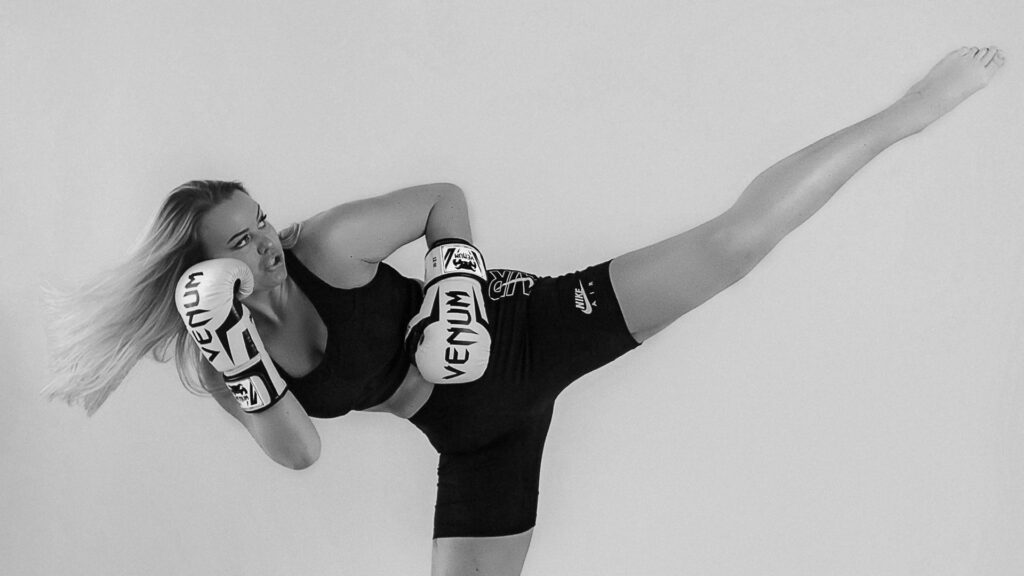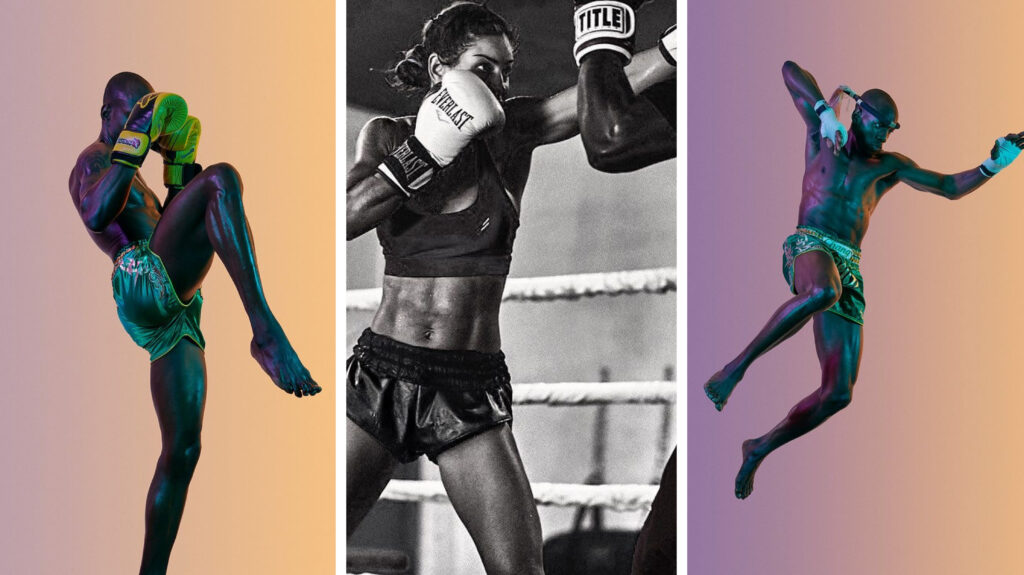
Kickboxing and Muay Thai are both striking-based combat sports, BUT they have several key differences in terms of rules, techniques and cultural origins.
Which are they?
Well one of them is it’s origins:
Kickboxing as a stand-up combat sport, involves punches and kicks. It has Western origins and emerges as a sport in the Uniter States and Japan in the 1960s and 1970s.
Muay Thai, also know as Thai boxing, is a traditional martial art that originated in Thailand. It has a long history in Thai culture and dates back hundreds of years.
Of course the other crucial part – the rules
The rules of kickboxing vary depending on the specific organization, but generally, it involves using punches and kicks above the waist. Elbow and knee strikes are typically not allowed and clinching is limited.
Muay Thai has a more extensive rule set that allows the use of punches, kicks, elbows and knees.
Clinching is a significant part of Muay Thai, and fighters can use it to deliver strikes, off-balance opponents, or control the fight.
They also use a sweeping technique, when one athlete is essentially kicking or “sweeping” their opponent off of their feet and onto the ground.

Difference in technique
When talking about the technique, then kickboxers tend to focus on punching and kicking techniques.
They often utilize more Western-style boxing techniques and may have limited repertoire of kicks compared to Muay Thai fighters. Punching techniques are similar to Western boxing, emphasizing jabs, hooks, crosses, and uppercuts.
Kicking techniques are typically roundhouse kicks and front kicks, there are also different kicks with jumping and spinning that requires good skills and flexibility.
Muay Thai fighters are known for their use of the “eight limbs.” In addition to traditional punches and kicks, they incorporate powerful elbow strikes and knee strikes.
Is clinching allowed in both styles?
Clinching is either limited or discouraged in many forms of kickboxing. When fighters clinch, they are usually separated quickly by the referee.
For example the rules for clinching in K-1 (which is a form of kickboxing) and WAKO (World Association of Kickboxing Organizations) state that the clinching is allowed but not for longer than 5 seconds and the fighter can attack with a knee only when holding opponents neck with both hands, but they can only use one knee strike in an attack of a clinching.
The difference of defense
Kickboxers tend to emphasize head movement, footwork, and traditional boxing-style defense techniques to avoid punches and kicks. For example, Muay Thai fighters can defend themselves from leg kick attack by catching it, however in kickboxing, this technique is not allowed.
Footwork
in kickboxing is often focused on maintaining distance and positioning for punches and kicks. It tend to be more lateral and boxing oriented. Muay Thai fighters also emphasize maintaining proper distance, but they may use more circular movements to set up angles for kicks, knees and elbows, especially when in the clinch.
Which are the attacking angles?
Attacking angles for kickboxers tend to be more in a linear fashion, relying on straightforward punches and kicks. By moving diagonally or laterally, a kickboxer can slip or dodge incoming strikes while maintaining their own offensive potential.
This allows them to evade punches and kicks more effectively than simply moving backward or forward. Muay Thai fighters often use circular movements and pivots to set up strikes, particularly in the clinch. Kickboxers often prioritize speed and precision in their strikes.
They may use angles to set up quick, powerful combinations to score points and potentially finish the fight.
Muay Thai fighters use angles to set up these versatile strikes, often launching them from unexpected angles in the clinch or at close range.
The scoring
Scoring in kickboxing typically rewards clean punches and kicks that land on the opponent’s head or body. Knockdowns can also earn a fighter points. However in Muay Thai, scoring takes into account the effectiveness of strikes, as well as control in the clinch.
Fighters are also awarded points for strong knees, kicks and elbow strikes.
The gear
Depending on the rules and organization, kickboxers may wear headgear, shin guards, and gloves with different specifications.
Muay Thai fighters typically wear gloves and shorts, with some using shin guards for sparring. Headgear is less common in traditional Muay Thai bouts.
KICKBOXER VS MUAY THAI FIGHTER
